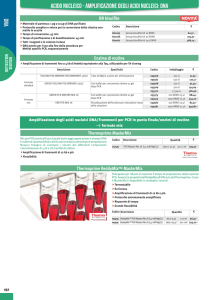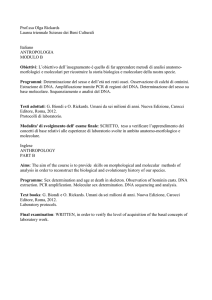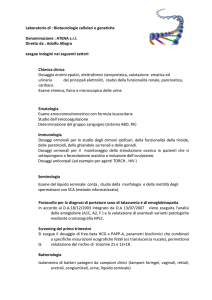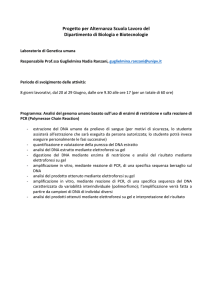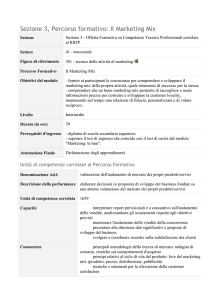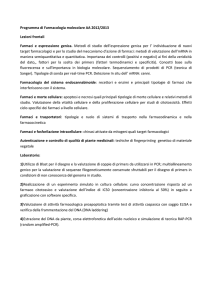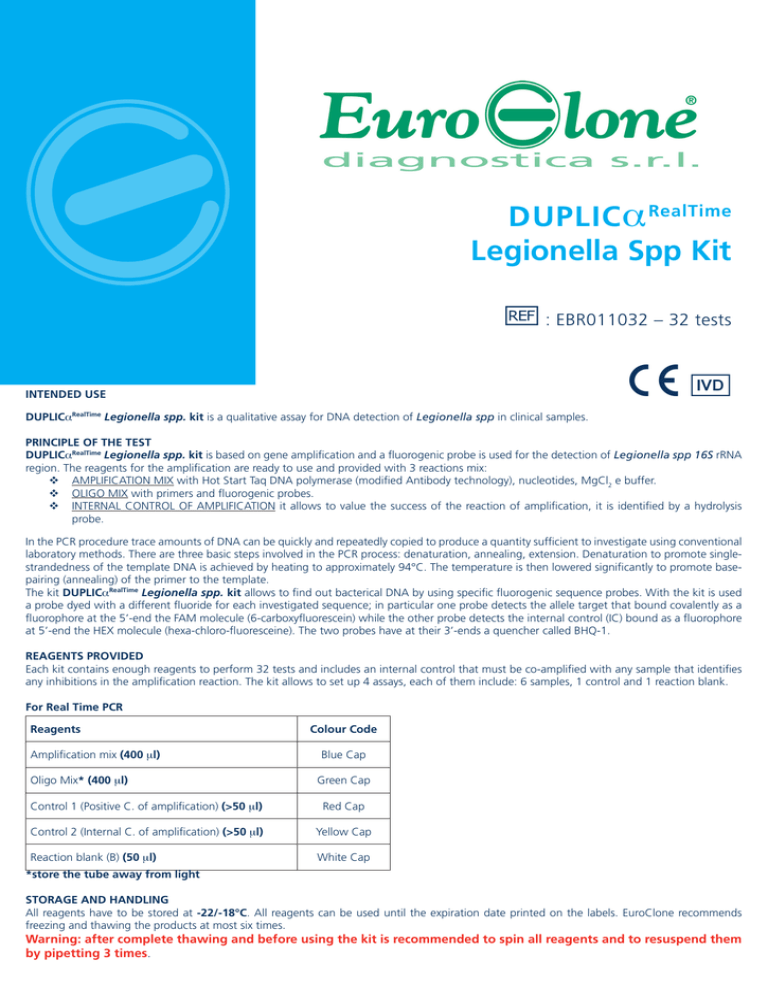
DUPLIC α RealTime
Legionella Spp Kit
h: EBR011032 – 32 tests
CV
INTENDED USE
DUPLICaRealTime Legionella spp. kit is a qualitative assay for DNA detection of Legionella spp in clinical samples.
PRINCIPLE OF THE TEST
DUPLICaRealTime Legionella spp. kit is based on gene amplification and a fluorogenic probe is used for the detection of Legionella spp 16S rRNA
region. The reagents for the amplification are ready to use and provided with 3 reactions mix:
AMPLIFICATION MIX with Hot Start Taq DNA polymerase (modified Antibody technology), nucleotides, MgCl2 e buffer.
OLIGO MIX with primers and fluorogenic probes.
INTERNAL CONTROL OF AMPLIFICATION it allows to value the success of the reaction of amplification, it is identified by a hydrolysis
probe.
In the PCR procedure trace amounts of DNA can be quickly and repeatedly copied to produce a quantity sufficient to investigate using conventional
laboratory methods. There are three basic steps involved in the PCR process: denaturation, annealing, extension. Denaturation to promote singlestrandedness of the template DNA is achieved by heating to approximately 94°C. The temperature is then lowered significantly to promote basepairing (annealing) of the primer to the template.
The kit DUPLICaRealTime Legionella spp. kit allows to find out bacterical DNA by using specific fluorogenic sequence probes. With the kit is used
a probe dyed with a different fluoride for each investigated sequence; in particular one probe detects the allele target that bound covalently as a
fluorophore at the 5’-end the FAM molecule (6-carboxyfluorescein) while the other probe detects the internal control (IC) bound as a fluorophore
at 5’-end the HEX molecule (hexa-chloro-fluoresceine). The two probes have at their 3’-ends a quencher called BHQ-1.
REAGENTS PROVIDED
Each kit contains enough reagents to perform 32 tests and includes an internal control that must be co-amplified with any sample that identifies
any inhibitions in the amplification reaction. The kit allows to set up 4 assays, each of them include: 6 samples, 1 control and 1 reaction blank.
For Real Time PCR
Reagents
Amplification mix (400 ml)
Oligo Mix* (400 ml)
Colour Code
Blue Cap
Green Cap
Control 1 (Positive C. of amplification) (>50 ml)
Red Cap
Control 2 (Internal C. of amplification) (>50 ml)
Yellow Cap
Reaction blank (B) (50 ml)
White Cap
*store the tube away from light
STORAGE AND HANDLING
All reagents have to be stored at -22/-18°C. All reagents can be used until the expiration date printed on the labels. EuroClone recommends
freezing and thawing the products at most six times.
Warning: after complete thawing and before using the kit is recommended to spin all reagents and to resuspend them
by pipetting 3 times.
REAGENTS REQUIRED BUT NOT SUPPLIED
• Micropipette 1-10 ml
• Micropipette 10-100 ml
• Sterile filter tips
• Rack for 0.2 ml tubes
• Optical tubes or microplate for Real Time PCR
• Thermal cycler for Real Time PCR
PRECAUTIONS AND WARNINGS
• Do not use the reagents after the date of expiration.
• Mix the reagents of the kit before use.
• Periodically verify the calibration of micropipette and instrumentation.
• Change gloves frequently.
• Laboratory equipments (pipettes, tips etc.) should not be moved from one working area to another.
• Periodically wash the working area with hypochlorite 5%
• Use powder-free gloves. Do not leave fingerprints on optical caps. Do not write on caps as this may cause an interference with fluorescence
detection.
OPERATING PROCEDURE
a) DNA extraction
Any commercial bacterial DNA extraction kit could be used.
b) Thermal Cycler set up
Refer to the specific handbook of the equipment used but be sure to set the following thermal profile.
We recommend to switch on the instrument, setting the thermal profile and having the plate ready, before preparing the reaction mix.
Thermal Profile:
Time
Temperature
Cycles
5 min
95°C
1
15 sec
95°C
45
60 sec
60°C
Fluorescent
Acquisition
c) Preparation of PCR mix
For each experiment prepare a PCR mix for the 1 control (Control 1), 1 reaction blank, n+1 samples. The reagents of PCR mix have to mixed under
this ratio:
REAGENT
VOLUME (ml)
Amplification mix
10
Oligo mix
10
Control 2 (Internal C.)
1
Once the mix is ready, aliquot 21ul of Master Mix in the tubes or in the microplates for PCR and add in each tube 4ul of extracted DNA and of
controls; set the tubes inside the instrument and start the program of amplification you had set before.
Remember that at the end of the program remove the tubes from the thermal cycler.
d) ANALYSIS and INTERPRETATION of the RESULTS
The fluorescence signal registered by the instrument detects the presence of the DNA, in particular the fluorescence detected in the FAM channel
reveals the target DNA, while the fluorescence detected in the HEX channel reveals the amplification of the internal control (Control 2). Results are
interpreted by analyzing the threshold Cycle (Ct) value for each sample.
The Ct is defined as the cycle at which the amplification curve crosses the threshold line. The threshold line is calculated by the mean of fluorescence
background multiply by three times standard deviation during the initial cycles of PCR, prior to significant accumulation of the target amplicon.
During these early PCR cycles, the background signal is used to determine the “baseline fluorescence”.
When a signal at fluorophore FAM (Ct > 0) is detected, the sample is surely positive and the signal detected by HEX fluorophore (Ct≥ 0) is not
relevant. When no signal at fluorophore FAM (Ct = 0) is detected, to confirm the negativeness of the result, the completed amplification of internal
control, and therefore the appearance of a fluorescent signal at HEX (Ct > 0) fluorophore level, must be verified. Only in this case we can state
that the sample is definitely negative. The absence of amplification signal at level of the two FAM-HEX (Ct=0) fluorophores indicates the presence
of inhibition of the PCR. The sample must be repeated and a dilution 1:10 of the target DNA is suggested.
FAM
HEX
RESULT
Ct > 0
Not relevant (Ct≥ 0)
POSITIVE
Ct = 0
Ct > 0
NEGATIVE
Ct = 0
Ct = 0
INHIBITION
Warning:
The run is valid only if:
• The Blank is positive in the HEX channel, but negative in the FAM channel.
• The Positive Control is positive in both the FAM and for the HEX channel.
If these two conditions have been met, the run is valid and it’s possible to analyse the data. Otherwise the run is not valid.
It is responsibility of the user to validate the run checking that these conditions have been met.
TROUBLESHOOTING
Problem 1: No signal
1. Wrong channel/filter was chosen.
2. Pipetting error due to omitted reagents or samples.
3. Inhibitory effect of the sample: genomic DNA with a insufficient purification and/or insufficient extraction.
4. Check the kit was stored correctly.
5. Assess the performance of the thermal cycler.
Problem 2: Fluorescence intensity too low
1. Deterioration of dyes and/or primers in the reagents due to unsuitable storage conditions.
2. Very low starting amount and/or purity of genomic DNA.
Problem 3: Fluorescence intensity varies
1. The prepared PCR master mix is not well mixed.
2. Air bubbles trapped in the PCR tubes.
“THE PURCHASE OF THIS PRODUCT GRANTS THE PURCHASER RIGHTS UNDER CERTAIN
ROCHE PATENTS TO USE IT SOLELY FOR PROVIDING HUMAN IN VITRO DIAGNOSTIC
SERVICES. NO GENERAL PATENT OR OTHER LICENSE OF ANY KIND OTHER THAN THIS
SPECIFIC RIGHT OF USE FROM PURCHASE IS GRANTED HEREBY”
DUPLIC α RealTime
Legionella Spp Kit
h: EBR011032 – 32 tests
CV
FINALITA’ D’USO
DUPLICaRealTime Legionella spp. kit è un test qualitativo, impiegato per la ricerca del DNA batterico di Legionella spp. in campioni clinici.
PRINCIPIO DEL TEST
DUPLICaRealTime Legionella spp. kit é un test molecolare basato sul riconoscimento del DNA di Legionella spp. E’ stato sviluppato per amplificare
la regione del 16S rRNA. I reagenti per la reazione di amplificazione sono pronti all’uso e suddivisi in tre mix di reazione:
AMPLIFICATION MIX: contenente Hot Start Taq DNA polymerase (modified Antibody technology), nucleotidi, MgCl2 e buffer.
OLIGO MIX contenente i primers e le sonde fluorogeniche.
CONTROLLO INTERNO DI AMPLIFICAZIONE: permette di valutare il successo della reazione di amplificazione, ed è identificato da una
specifica sonda a idrolisi.
La polymerase chain reaction (PCR) è una reazione che permette di amplificare una sequenza target di DNA generando numerose copie di un
templato. La reazione si compone generalmente di tre fasi: denaturazione del DNA, annealing (appaiamento dei primers) ed estensione.
Queste fasi, che si realizzano attraverso riscaldamenti e raffreddamenti automatizzati mediante un termociclatore, rappresentano un ciclo di
amplificazione; la ripetizione in continuo del ciclo base porta alla produzione di miliardi di frammenti del DNA in studio. Alla denaturazione del DNA
che avviene ad alte temperature segue l’appaiamento di specifici primers al DNA target: l’enzima Taq polymerase riconosce le estremità 3’ di questi
primers ed utilizzando i nucleotidi trifosfati (dNTPs) polimerizza il DNA, creando in questo modo numerose copie del templato. In tutti i sistemi PCR
real-time la rivelazione dell’ amplificato avviene utilizzando un marcatore fluorescente che nelle sonde fluorogeniche viene chiamato “reporter”.
Il kit DUPLICaRealTime Legionella spp. kit permette di rilevare il DNA batterico mediante l’impiego di sonde fluorogeniche sequenza specifiche. Le
sonde fluorogeniche sono costituite da una sequenza oligonucleotica che presenta all’estremità 5’ un marcatore fluorescente chiamato «reporter »,
mentre all’estremità 3’ legano un secondo marcatore chiamato « quencher ». Il saggio è in grado di rilevare il prodotto specifico di amplificazione
andando a monitorare l’incremento del segnale di fluorescenza che risulta essere direttamente proporzionale alla quantità di prodotto amplificato;
l’elevata specificità del sistema consente alla sonda di discriminare tra frammenti che differiscono di un solo nucleotide.
Nel kit viene usata una sonda marcata con un differente fluoroforo per ogni sequenza investigata; in particolare una sonda che va a rilevare
l’allele target e ha legato in modo covalente come fluoroforo all’estremità 5’ la molecola FAM (6-carbossi-fluoresceina) mentre l’altra sonda che
va a rilevare il controllo interno (IC) ha legato come fluoroforo all’estremità 5’ la molecola HEX (Esa-cloro-fluoresceina). Le due sonde hanno
all’estremità 3’ un quencher chiamato BHQ-1. Se eccitata, la sonda integra non emette fluorescenza, in quanto la vicinanza del quencher al
reporter, impedisce a quest’ ultimo l’emissione della fluorescenza (effetto di quenching).
COMPOSIZIONE DEL KIT
Questo Kit è stato disegnato per poter eseguire 32 reazioni, è incluso un controllo interno di amplificazione che deve essere coamplificato insieme
ad ogni campione e che permette di identificare inibizioni nelle reazioni di amplificazione. Il kit permette di effettuare 4 corse, ciascuna delle quali
include: 6 campioni, 1 controllo e 1 bianco di reazione.
Real Time PCR
Reagenti
Amplification mix (400 ml)
Codice colore
Tappo Blu
Oligo Mix* (400 ml)
Tappo Verde
Control 1 (Positive C. of amplification) (>50 ml)
Tappo Rosso
Control 2 (Internal C. of amplification) (>50 ml)
Tappo Giallo
Reaction blank (B) (50 ml)
*proteggere la provetta dalla luce
Tappo Bianco
Conservazione e Stabilità
Tutti i reagenti devono essere conservati a -22/-18°C fino alla data di scadenza riportata sulla confezione. EuroClone raccomanda di non scongelare
e ricongelare il prodotto più di sei volte.
Attenzione: dopo il completo scongelamento e prima dell’utilizzo si raccomanda di centrifugare tutti i reagenti e risospenderli
pipettandoli 3 volte.
MATERIALE NECESSARIO NON FORNITO
• Micropipette 1-10 ul
• Micropipette 10-100 ul
• Puntali con filtro
• Rack per tubi da 0.2 ml
• Micropiastra ottica per real time PCR
• Tubi per PCR da 0. 2 ml con tappi ottici
• Termociclatore per Real Time PCR
PRECAUZIONI E RACCOMANDAZIONI DI UTILIZZO
• La strumentazione di laboratorio (pipette, tubi, etc.) non deve circolare da una stazione di lavoro all’altra.
• Non utilizzare reagenti dopo la data di scadenza.
• Miscelare i reagenti del kit prima dell’utilizzo.
• Periodicamente verificare la precisione delle pipette, e il corretto funzionamento della strumentazione.
• Cambiare spesso i guanti.
• Lavare periodicamente il banco di lavoro con Ipoclorito al 5%.
• Utilizzare i guanti senza talco e evitare di lasciare ditate sui tappi ottici. Non scrivere sui tappi, questo potrebbe creare dei problemi nella rivelazione
della fluorescenza.
PROTOCOLLO OPERATIVO
a) Estrazione DNA
Qualsiasi kit commerciale.
b) Programmazione del termociclatore
Riferirsi allo specifico manuale dello strumento ma assicurarsi di impostare il seguente profilo termico:
Profilo Termico:
Tempo
Temperatura
Cicli
5 min
95°C
1
15 sec
95°C
45
60 sec
60°C
Acquisizione Fluorescenza
Si suggerisce, prima di allestire la miscela di reazione, di accendere e programmare il termociclatore per Real Time PCR.
c) Preparazione della PCR mix
Per ogni esperimento preparare una mix di PCR per 1 controllo (Controllo 1), 1 bianco di reazione, n campioni più uno. La mix deve essere preparata
miscelando i reagenti nei rapporti volumetrici di seguito indicati:
REAGENTI
VOLUME (ml)
Amplification mix
10
Oligo mix
10
Controllo 2 (C. Interno)
1
Terminata la preparazione della mix, aliquotare 21ul della Master Mix nei tubi o nelle micropiastre per PCR e aggiungere in ogni tubo 4ul di DNA
estratto e dei controlli; disporre i tubi all’interno dello strumento e avviare il programma di amplificazione precedentemente impostato.
Al termine del protocollo di amplificazione, rimuovere i tubi dal termociclatore.
d) ANALISI ed INTERPRETAZIONE dei RISULTATI
Il segnale di fluorescenza registrato dalla strumentazione identifica la presenza del DNA, in particolare la fluorescenza rilevata dal CANALE FAM
identifica il DNA target, mentre la fluorescenza rilevata dal CANALE HEX identifica l’amplificazione del Controllo Interno (Controllo 2). I risultati
sono interpretati attraverso l’analisi del ciclo soglia Ct (Threshold Cycle Ct) per ciascun campione.
Il ciclo soglia è definito come il ciclo, a livello del quale, la curva di amplificazione interseca la linea soglia (Threshold line). La linea soglia viene
calcolata dalla media della fluorescenza di background per tre volte la deviazione standard; durante i cicli iniziali di amplificazione, prima di un
significativo accumulo di DNA target. Durante i primi cicli di amplificazione della PCR viene calcolata la fluorescenza di background utilizzata per
il calcolo della fluorescenza basale.
Quando si registra un segnale a livello di fluoroforo FAM (Ct > 0), il campione è sicuramente positivo, ed il segnale rilevato dal fluoroforo HEX (Ct≥
0) non è rilevante. Quando non si registra segnale a livello di Fluoroforo FAM (Ct = 0), per confermare la negatività del risultato, si deve verificare
l’avvenuta amplificazione del controllo interno e quindi la comparsa di un segnale di fluorescenza a livello di Fluoroforo HEX (Ct>0). Solo in questo
caso si può affermare che il campione è sicuramente negativo. L’assenza di segnale di amplificazione a livello dei due fluorofori FAM-HEX (Ct=0)
indica la presenza di inibizione della PCR. Il campione deve essere ripetuto, si suggerisce di effettuare una diluizione 1:10 del DNA target.
FAM
HEX
RISULTATO
Ct > 0
Non Rilevante (Ct ≥ 0)
POSITIVO
Ct = 0
Ct > 0
NEGATIVO
Ct = 0
Ct = 0
INIBITO
Attenzione:
La corsa é valida solo se:
• Il Bianco é positivo nel canale HEX e negativo nel canale FAM.
• Il Controllo Positivo é positivo sia nel canale FAM che nel canale HEX.
Se si verificano queste due condizioni la corsa risulta valida ed é possibile analizzare I dati, altrimenti la corsa non é valida.
É responsabilità dell’operatore convalidare la corsa controllando che queste due condizioni si siano verificate.
TROUBLESHOOTING
Problema 1: Mancanza completa di segnale
1. E’ stato scelto il canale/filtro sbagliato.
2. Errore nel pipettaggio per omissione di un reagente o del campione.
3. Effetti inibitori del campione: DNA genomico con purificazione insufficiente e/o estrazione insufficiente.
4. Controllare la corretta conservazione del kit.
5. Controllare le prestazioni del termociclatore.
Problema 2: Intensità di fluorescenza è troppo bassa
1. Deterioramento del fluoroforo e/o dei primer dovuto ad una cattiva condizione di conservazione del Kit.
2. Quantità di DNA troppo inferiore e/o di bassa purezza.
Problema 3: Intensità di fluorescenza variabile
1. La PCR Master Mix non è stata miscelata in modo corretto.
2. Ci sono bolle d’aria intrappolate nei tubi di PCR.
“L’acquisto di questo prodotto assicura all’acquirente i diritti coperti da alcuni brevetti
Roche allo scopo unico di offrire servizi di diagnostica umana in vitro. L’acquisto di
questo prodotto non concede nessun altro brevetto generale, diritto o licenza di alcun
tipo, al di fuori dello specifico diritto di utilizzo.“
Rev 0 EBR011032 – 06-2013
PI-EBR011032/r0/0413/1_EN/ITA

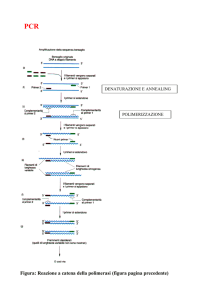
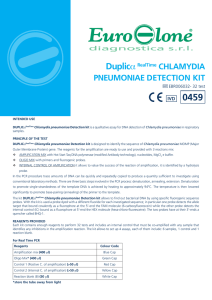

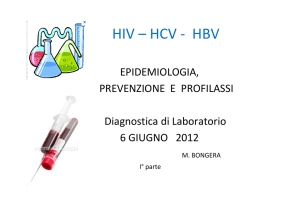
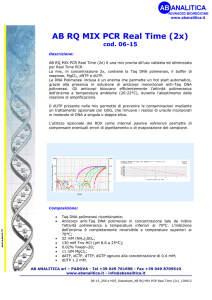
![mutazioni genetiche [al DNA] effetti evolutivi [fetali] effetti tardivi](http://s1.studylibit.com/store/data/004205334_1-d8ada56ee9f5184276979f04a9a248a9-300x300.png)
